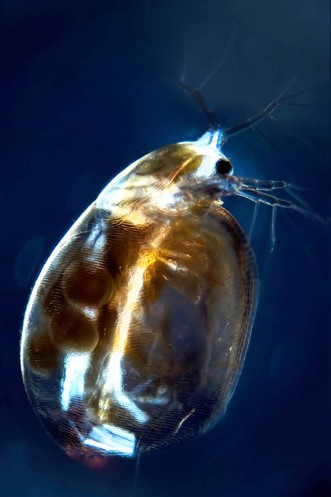By: Dana Sackett, PhD
How toxic is the water? That is a question many have asked themselves when trying to understand the impact of all the pollutants from industry, land and road run-off, and wastewater, mixing in an ecosystem. However, as we discussed previously (see here), there is no technique or instrument that can test for every single pollutant in an ecosystem individually. Each pollutant or class of pollutants requires a specific collection technique, preparation process, testing procedure, and comes with its own cost. It would therefore be outrageously expensive and impossibly time-consuming to test for all possible pollutants individually at any given location.
One way around this dilemma in understanding water toxicity, is to measure the biological effect of the water rather than measuring the pollutants. For instance, one method to determine the overall toxicity of water is to expose an organism to the polluted water and see what happens. This is called a direct toxicity test. These tests are often done in controlled laboratory settings to ensure any adverse effect seen in the test organisms after they are exposed can only be from the pollutants in the water. Also, because the same standard species are used for these tests the relative level of toxicity from one place can be easily compared to another.

Another way to get-around testing for every single toxic chemical to understand overall water toxicity is to test for the specific biological effect that results from exposure to a class of chemicals. For instance, the endocrine system works as a messaging system, where one part of the body sends a message to do something (or to stop doing something) to another part of the body. An example is when the ovaries send the hormone estrogen as a message to other parts of the human body to begin the process of puberty. However, for the message to be received, the messenger, or hormone, must bind to a receptor that is specific to that hormone (similar to a key fitting into a lock). Some pollutants can bind to hormone receptors, falsely sending a message that interferes with the natural functioning of the body. Hundreds of pollutants have been classified as ‘estrogen mimics’ because they bind to the estrogen receptor in organisms. Scientists leveraged their knowledge about the endocrine system to create a way to measure the overall estrogenic effect of pollutants in water by putting estrogen receptors on yeast cells and engineering them to produce light (luminesce) when a chemical binds to the receptor. Thus, by measuring the amount of light produced by the yeast cells after they are exposed to a water sample, scientists can measure the overall estrogenic effect of all the pollutants in the water.

Another clever technique that was discovered in 1979, includes the use of a non-pathogenic marine bacteria (Allivibrio fischeri) that produces light (luminesce) as a natural part of their metabolism. These bacteria are highly sensitive to an enormous number of toxic substances. Exposure to pollutants disrupts their respiratory system causing a reduction in their metabolism and therefore a reduction in the amount of light they naturally produce. Consequently, measuring the reduction in light produced by these bacteria after they are exposed to polluted water can be directly related to the level of toxicity of that water.

While testing for individual pollutants is still incredibly important to identify the culprits responsible for ecosystem harm, understanding internal biological systems helps us find new approaches to measure and recognize the impact of the cocktail of contaminants that can end-up in our waterways.
References
ALS EnviroMailTM. 2018. Microtox Toxicity Test. Issue #120.
ISO 11348-3. 2007. Water quality-determination of inhibitory effect of water samples on the light emission of Vibrio fischeri, Part 3 method with freeze dried bacteria.
Johnson BT. 2005. Microtox® Acute Toxicity Test. In: Blaise, C., Férard, JF. (eds) Small-scale Freshwater Toxicity Investigations. Springer, Dordrecht. https://doi.org/10.1007/1-4020-3120-3_2
Sackett DK, Lee Pow C, Rubino MJ, Aday DD, Cope WG, Kullman S, Rice JA, Kwak TJ, Law M. 2015. Sources of endocrine disrupting compounds in North Carolina waterways: A geographic information systems approach. Environmental Toxicology and Chemistry 34:437-445.
U.S. EPA. 2003. Environmental Technology Vertification Report. Strategic Diagnostics Inc. Microtox, Rapid Toxicity Testing System. Prepared by Battelle.
WCMUC 1994. Standard Procedure for Microtox® Analysis, ed. Irene Gaudet, Alberta Environmental Centre


Good job! We need to remind the public and our fellow water professionals about this often.
Explaining the science in plain English. Thank you.
Well done The Fisheries Blog – Deepverge Technology is now at the forefront of determining Worldwide pollution in water courses with ‘Real Time’ feedback.